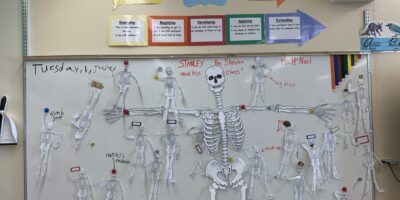The Communities to Classrooms (C2C) virtual conference was a great opportunity to attend as a student teacher and see all the different sessions offered while choosing ones of interest to each individual person attending, as well as having the chance to chat with not only people in the PG district but all over BC.
The conference started off with the BCTF Welcome and a message from Teri Mooring. In this session the concept of compassion for students, teachers, support, etc was addressed, as well as the choices being made about out professional development for the day. It was interesting to watch 400+ people ask questions mainly about the covid situation and how the BCTF and BC’s government were handling the situation. Teri answered all questions to the best of her ability and explained the ongoing work and communication between the BCTF and BC’s Health Board. While I am sure not all teachers were put to ease, it was great to see the support that the BCTF was providing and how they would continue to address the concerns of the teachers and support staff during this time.
I got to attend several different sessions, with groups ranging from 20 to 80 people. The sessions I got to attend were:
- The Welcome and Plenary
- Sharing Early Years Wisdom as a Community of Practice: Supporting children and their families into a successful transition from early care & learning setting to school
- Pedagogy of Place in SD57- Vanessa Elton
- Wellness Wheel- Francois Prince
- FPPL- Sylvie de Grandpré
- Final Session- Zoom Social & Musical Performance by Kym Gouchie
All of these sessions I picked in support of what we have been talking about lately in class, as well as focusing on the earlier years of education due to being in the primary cohort. To go over the what, so what and the now what for all of these sessions, I would need to write a book not a blog post, so to limit all the fantastic information I was exposed to I am just going to focus on the FPPL with Sylvie de Grandpré that I attended.
The what that I learned from this session was how to bring First People Principle’s of Learning into the outdoors in relation to connectedness and relationships. The learning intentions of this session was to be mindful when entering the outdoors with FPPL, attention to details, use project inquiry-based learning to extend connectedness to natural world, and challenge the thinking. Note the word enteringthe outdoors, as it is in its own self not an it, but its own inside. An example would be entering inside the courtyard, entering insidethe woods, entering into the field. The concept of entering the outdoors rather than going outside or leaving inside was something that I really took note of. I had never thought of going outside another way then leaving the inside but when this was brought to my attention, I realized that it is true. We are entering into the inside that is the outdoors rather than leaving a place and I really enjoyed that new thought. Another comment that was made was how FPPL was not a checklist that we should be following, and I think this is something that Educ 446 with Tina has been showing us. FPPL is so dynamic and has several different concepts and as new teachers we are still developing the skills to be able to incorporate them into our teachings and pedagogical statements.
The now what that can be taken from all this can relate to how we, myself with all upcoming and current educators, can change how we talk about the outdoors and the relationship it has with FPPL. As a future educator the big takeaway from this session for me was the example she gave of how to incorporate this learning into the curriculum. Sylvie mentioned about the respect that the outdoors deserves and one way to teach that is to go into an area multiple times. This create a relationship between you and the area, and for each individual that will be different. The main thing is to not disrupt the environment just observe all you can, and when teaching it start using the First Nations language of the area. She explained how by using the Indigenous name for a squirrel, or a tree, etc. will help normalize and make it more common for people to use in everyday life conversations. I took this as what my next step could be when going into a class and incorporating FPPL and BC teacher standard 9 into my teaching plans. Being able to learn the names and familiarize myself with the Carrier language of the area, would then give me the ability to teach and the language and support my Indigenous community. This could then also expand into bringing an elder, or Indigenous community member into the classroom, indoors or outdoors, to teach the names of such the surrounding natural life.
This session was a great way to get more ideas on how to incorporate FPPL into my own learning, as well as for future teaching ideas. I think attending conferences like this, particularly ones that are put on by the SD57 district, are important to gain more inside information on how to teach these ideas in our own community. I am very thankful that I got to participate in all the sessions that I did at the C2C conference.
Additional information that occurred in the chat for that session:
- Read Braiding Sweetgrass
- “My Octopus Teacher” documentary (Australian)



Leave a Reply